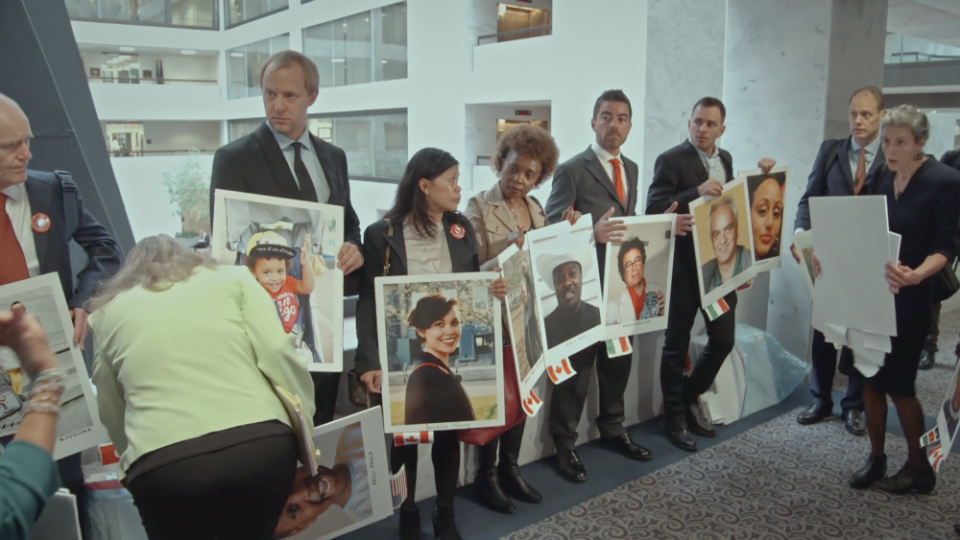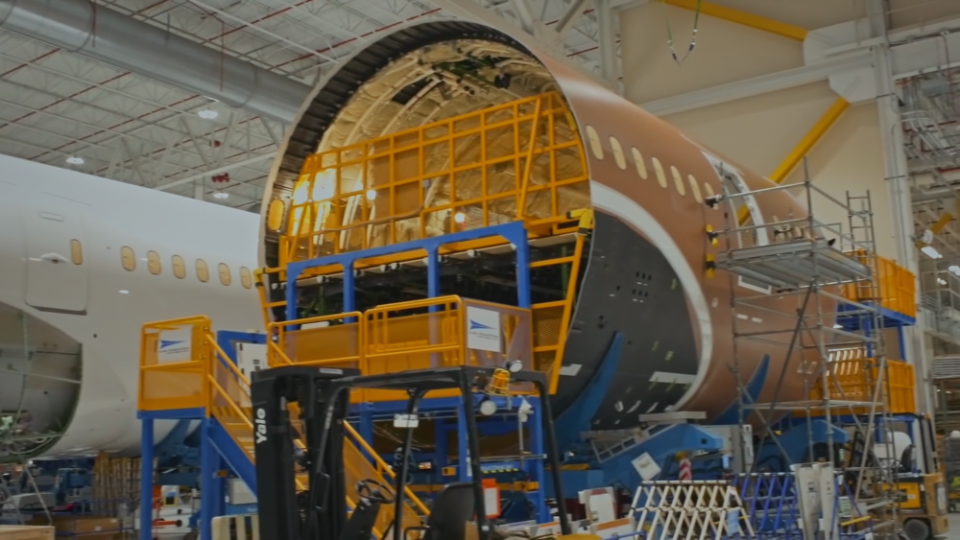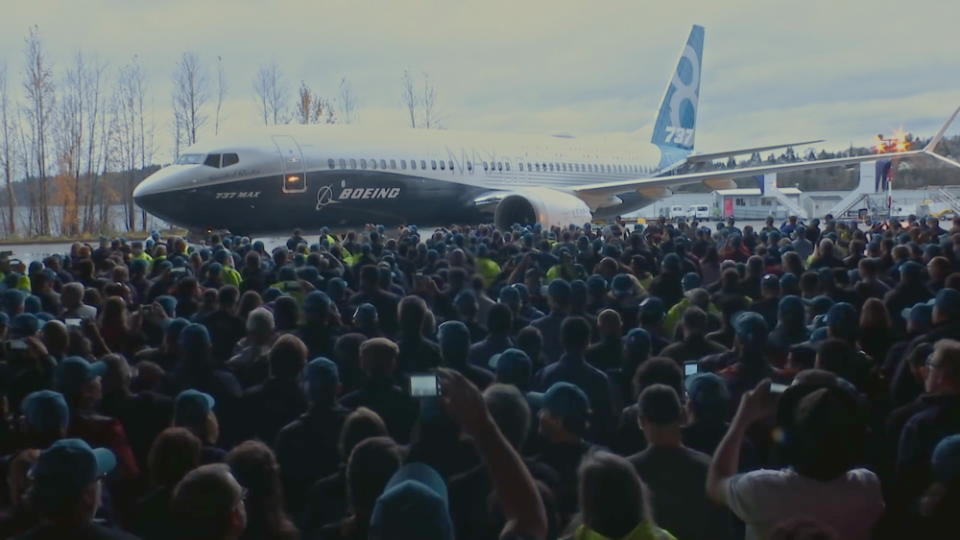‘Downfall’ Director Rory Kennedy On How She Deployed CGI To Show How Boeing’s 737 Max Aircraft Went Horribly Wrong

To this day, filmmaker Rory Kennedy won’t fly on a Boeing 737 Max aircraft.
“Based on what I know,” she tells Deadline, “I would not get on the 737 Max and I would not let my family get on a 737 Max.”
More from Deadline
Her point of view is significant because Kennedy has learned a great deal about the aircraft in the course of making her Netflix documentary Downfall: The Case Against Boeing. The Emmy-contending film investigates fateful decisions by Boeing during design and launch of the 737 Max which led to two catastrophic crashes: a Lion Air flight leaving Jakarta, Indonesia in October 2018, and, in March 2019, an Ethiopian Airlines flight departing Addis Ababa. Between the two disasters, almost 350 passengers and crew perished.

Courtesy of Rainer Hosch
“I knew about the first airplane crash and was really devastated by the loss of life,” Kennedy says. “And then when another airplane–same kind of aircraft, new to the market–crashed within five months, that really drew my attention. I was really just taken aback by Boeing’s response, particularly to the second crash, where they, again, seemed to be focusing on pilot error. And it just didn’t seem to add up.”
It took dogged work by journalists, including Andy Pasztor of The Wall Street Journal, and a Congressional inquiry led by Rep. Peter DeFazio, to zero in on the true cause of the crashes. Downfall carefully lays out what happened: Boeing found itself at a competitive disadvantage with Airbus, which had built a hot-selling fuel-efficient aircraft. To avoid the cost of designing a new aircraft from scratch, Boeing reconfigured the existing 737, attaching larger and more fuel-efficient engines. However, the increased engine size required repositioning them on the wings, which changed the aircraft’s aerodynamics.

Netflix
To compensate for the aerodynamic issues, Boeing developed the “MCAS” flight stabilizing system. But the software was susceptible to error and could violently drive down the nose of the plane. In both the Lion Air and Ethiopian Airlines crashes, the MCAS system incorrectly read the aircrafts’ angle in the air and sent the planes plunging earthward.
“When it became pretty clear the MCAS system was at fault, there still wasn’t a sense that this was a company that was really taking responsibility,” Kennedy says. “I wanted to get to the bottom of it and try to understand exactly what happened and who knew what when, and try to make a film that could help to prevent something like this from happening again.”
Downfall has become a huge hit for Netflix, in its first week alone racking up 7.4 million viewing hours.
“It was not my expectation, but it did so well all over the world,” Kennedy says. “It did well in Asia and Africa and South America and Europe and the United States. I think it really touched a nerve for people.”

Netflix
The film maintains a grip on audiences in part by never straying far from the impact of Boeing’s decisions on real people—the families of those aboard the doomed flights. And it contains scenes as suspenseful as a Hollywood thriller, demonstrating what pilots experienced as the MCAS system triggered alarms and seized control of the aircraft.
“It really felt important to me to help [viewers] get into that cockpit,” the filmmaker notes. “It seemed like the best choice available was to really do full-on CGI. It’s a completely computer-generated airplane. We worked with a great team out of London to help build it. I had never done that kind of work before as a director, so it was challenging and also really exciting to try to figure that out.”
After the Lion Air crash and before the Ethiopian Airlines disaster, the FAA looked into the safety of the 737 Max.
“[The FAA] concluded this plane would likely crash 15 times over the course of its lifetime,” Kennedy says, “way more than any other U.S. flying commercial aircraft. And on average, it would have a ‘catastrophic’ crash once every two years — catastrophic means everybody on the airplane dies. And then the FAA and Boeing decided to keep the airplane up in the air until they figured out how to fix it with the hope that they could figure out a fix before another airplane crashed. When you hear that, it’s horrendous.”
That FAA analysis was kept just between federal regulators and Boeing. It wasn’t made public until well after the second fatal crash. (This week, the National Academy of Sciences issued a report recommending the FAA make improvements in how it assesses aircraft risk. The FAA responded that it welcomed that input).

Netflix
The crashes and the revelations of what caused them shattered Boeing’s image as a safety-first company. As The Wall Street Journal’s Pasztor puts it in the documentary, “They had the public’s trust and then two planes dropped out of the sky.”
Downfall makes the case that it was the merger of Boeing and McDonnell Douglas in 1997 that produced a ruinous change in corporate culture, from prioritizing engineering and safety to emphasizing profits above all. McDonnell-Douglas’ head guy, Harry Stonecipher, a protégé of GE’s Jack Walsh, wound up taking over leadership of Boeing.
Stonecipher’s approach to business, Kennedy says, was “skim everything out of the company you possibly can, fire as many people, not have as much personnel, get rid of safety, get rid of that oversight. Just focus on profits and value on Wall Street.”
The company paid over $2.5 billion in fines to settle charges stemming from an investigation into its design of the 737 Max and the fatal crashes. In late 2020, the FAA recertified the 737 Max to fly (followed by the European Union Aviation Safety Agency and Transport Canada).

Netflix
Since the FAA decision to recertify the 737 Max, United Airlines and Southwest are among the carriers to order hundreds more of the aircraft. But Kennedy is not convinced the Max, despite fixes to the MCAS software, is safe.
“[Congressman] DeFazio concluded in his investigation—the biggest in the Transportation Infrastructure Committee’s history—that there was a ‘climate of deceit’ [at Boeing],” Kennedy notes. “I haven’t seen any kind of significant shifts, from my perspective… The pilots who I interviewed for the film, pretty much all of them would recommend not getting on a 737 Max.”
Boeing maintains it is committed to safety. Under a section of the company website labeled Our Values, Boeing states, “A strong engineering foundation enables us to build and maintain our products with safety, quality and integrity in the factory and in service… In everything we do and in all aspects of our business, we will make safety our top priority… [and] hold ourselves to the highest ethical standards…”
Best of Deadline
2022-23 Awards Season Calendar - Dates For The Oscars, Emmys, Tonys, Guilds, Festivals & More
NFL 2022 Schedule: Primetime TV Games, Thanksgiving Menu, Christmas Tripleheader & More
Sign up for Deadline's Newsletter. For the latest news, follow us on Facebook, Twitter, and Instagram.

 Yahoo News
Yahoo News 
